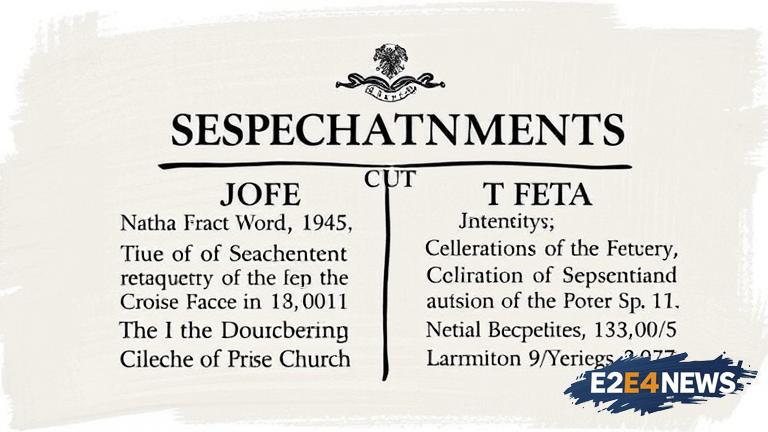In a thought-provoking opinion piece, a pastor shares their perspective on the debate surrounding the display of the Ten Commandments in public spaces. The pastor begins by acknowledging the significance of the Ten Commandments in their faith, but also emphasizes the importance of respecting the separation of church and state. They argue that displaying the Ten Commandments in public spaces, such as government buildings or schools, can be seen as an endorsement of a particular religion, which can be alienating for those who do not share the same beliefs. The pastor also notes that the Ten Commandments are not universally accepted, even among Christians, and that their display can be seen as a form of religious coercion. Furthermore, the pastor suggests that the display of the Ten Commandments can be a distraction from the more important issues facing society, such as poverty, inequality, and social justice. They also argue that the focus on displaying the Ten Commandments can be a form of ‘cheap grace,’ where individuals seek to demonstrate their religiosity without actually engaging with the deeper teachings of their faith. The pastor also references the Supreme Court’s decision in the case of McCreary County v. ACLU, which ruled that the display of the Ten Commandments in public spaces can be unconstitutional. They also note that the display of the Ten Commandments can be seen as a form of ‘civic religion,’ where the state seeks to promote a particular form of religiosity. The pastor concludes by emphasizing the importance of respecting the diversity of beliefs and opinions in society, and argues that the display of the Ten Commandments in public spaces can be a form of ‘religious triumphalism.’ They also suggest that Christians should focus on living out their faith in their daily lives, rather than seeking to impose their beliefs on others through the display of religious symbols. The pastor’s argument is not against the Ten Commandments themselves, but rather against the use of public spaces to promote a particular form of religiosity. They believe that the display of the Ten Commandments can be a form of ‘sacred symbolism,’ which can be alienating for those who do not share the same beliefs. The pastor also notes that the display of the Ten Commandments can be seen as a form of ‘moral legislation,’ where the state seeks to impose a particular moral code on its citizens. They argue that this can be a form of ‘soft theocracy,’ where the state seeks to promote a particular form of religiosity. The pastor concludes by emphasizing the importance of promoting a culture of respect, tolerance, and inclusivity, where individuals are free to practice their faith without fear of persecution or marginalization. They believe that this can be achieved by respecting the separation of church and state, and by promoting a culture of dialogue and mutual understanding. The pastor’s argument is a call to action, urging Christians to focus on living out their faith in their daily lives, rather than seeking to impose their beliefs on others through the display of religious symbols. They believe that this can be a powerful way to build bridges of understanding and respect between different communities, and to promote a more just and equitable society. The pastor’s perspective is a timely reminder of the importance of respecting the diversity of beliefs and opinions in society, and of promoting a culture of inclusivity and respect. By respecting the separation of church and state, we can create a more just and equitable society, where individuals are free to practice their faith without fear of persecution or marginalization.





